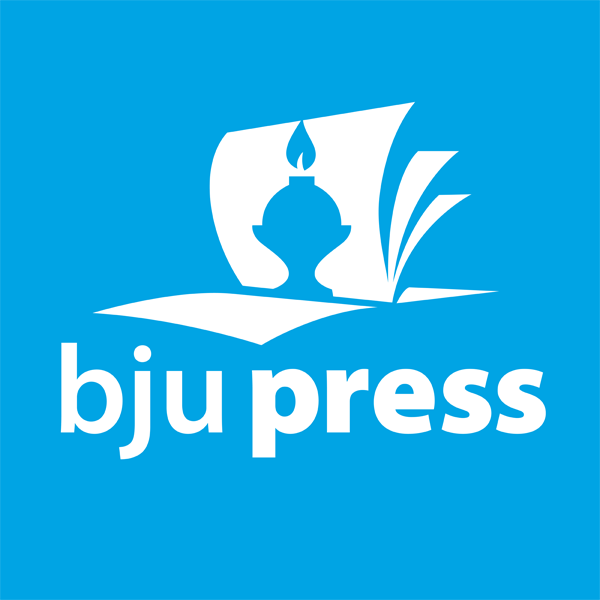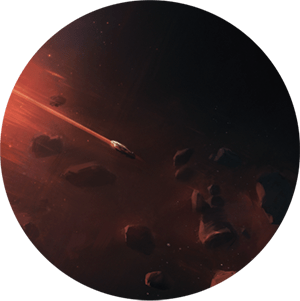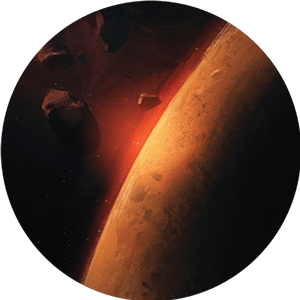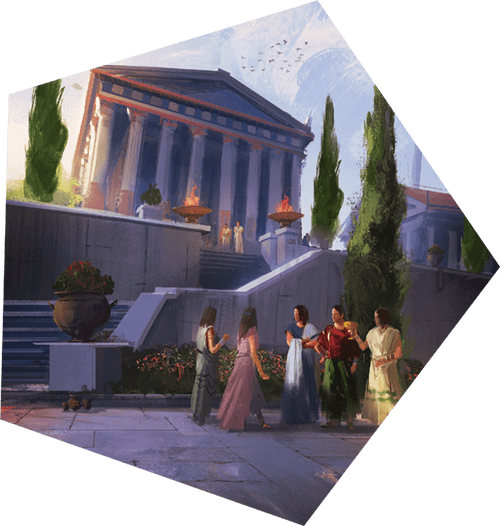BJU Press’s middle and high school literature program helps students go beyond just reading literature. Students learn how to interact with and appreciate it. This program uses the reading process to help students complete close readings of each selection. Units are arranged thematically to encourage students to ask and engage with worldview shaping questions that help them to recognize different perspectives in literature. By studying literature, students expand their own understanding of and learn to take delight in excellent writing. By examining texts from different cultures, diverse authors and genres, and a range of time periods, students learn about differing cultures and worldviews and how to communicate with them. In turn, the students learn to analyze and evaluate literature through the lens of a biblical worldview. It is through the analysis and evaluation of historical and contemporary literature that students become discerning, lifelong readers and creative communicators.
Program Approach for Literature
Build Vocabulary
Central to reading comprehension is simply knowing what the words in a text mean. To help students acquire new vocabulary, BJU Press literature courses don’t just give definitions for students to memorize, although listed definitions and vocabulary lists will also be available. We give teachers the tools to help students use what they already know as well as learn how to extract the meaning of a word from its natural context.
Prior to reading the text, the teacher instructs students about each literary work, introducing new vocabulary words and encouraging students to predict what the words mean. The teacher will often have sample sentences to read to the students to aid the students in determining meaning from context. Other times, the teacher encourages students to break words apart into their prefixes, roots, and suffixes to allow students to decode words based on prior knowledge. In group activities, students will collaborate to predict what words might mean, determine the meaning, and practice using new words correctly. During reading, margin notes will provide quick definitions for new vocabulary words so that students can keep reading without being distracted by an unfamiliar word.
Model Reading Strategies and Literary Skills
To teach students how to interact with literary texts, the teacher will find modeling sections throughout the teacher edition. These sections identify opportunities to model new concepts, including reading strategies. The teacher will model analyzing illustrations, finding examples of literary terms, creating and using graphic organizers, and much more.
Give a Range of Reading Opportunities
Students develop a rich cultural understanding by interacting with selections from a variety of authors, genres, and time periods. Literature 6, 7, and 8 include opportunities for novel studies. Literature 9 and 10 include a complete play in each course. American Literature (11) and British Literature (12) offer a comprehensive overview of the development of literature from early to contemporary writings.
| Novel Study Included | |
|---|---|
| Literature 6: Perspectives in Literature | The Book of Three, A Single Shard, Island of the Blue Dolphins |
| Literature 7: Exploring Themes in Literature | The Last Battle |
| Literature 8: Making Connections in Literature | Across Five Aprils |
| Literature 9: Fundamentals of Literature | Cyrano De Bergerac |
| Literature 10: Elements of Literature | Romeo and Juliet |
In addition to the novel studies and excerpts of other longer works, the student anthologies include a variety of grade-appropriate, relevant selections that have been chosen to engage students. Selections include the following:
- Informational texts
- Biographies
- Autobiographies
- Poetry
- Television and theater dramas
- Memoirs
- Newspaper, magazine, or internet articles
Interpret and Evaluate Images
Students continue to practice and develop visual analysis skills throughout the BJU Press middle and high school literature program. Units begin with a two-page spread that the teacher uses to lead a discussion about visual analysis and art appreciation. The teacher editions include additional opportunities for visual analysis in single-page illustrations and cartoons. Activities for students include a variety of visual analysis activities that allow the teacher to guide students through a more detailed analysis.
Develop Cultural and Historical Literacy
Literary works do not emerge from a vacuum. Every writer imprints a part of himself or herself on his or her writing, which is heavily influenced by family history, cultural history, travel experience, historical events of the time period, or major life events. In the BJU Press literature line, we encourage students to read with an awareness of who the writer is or was, the major events that occurred in the author’s lifetime, and the writer’s view of his or her society or culture. To do that, we provide the teacher with the tools to frame a piece of literature in its cultural or historical context for the students before they begin reading the selection. The teacher may lead a classroom activity that explores relevant information from the author’s background or simply inform students of those details. The teacher may also choose to lead a discussion concerning how the selection intersects with current events. This part of the reading process impresses upon students the importance of doing historical or cultural research as a reading strategy that enables them to better understand and engage with what they are reading.
Teach Literary Discernment and Biblical Responses
Literature studies allow students to engage with different cultures, perspectives, and worldviews from the safety of the classroom, where the study can be guided and the teacher can use worldview shaping questions to encourage students to think through the implications of literary perspectives. Students can learn how their peers think, which worldviews they hold, and then respond to alternate perspectives from a biblical worldview. As students engage with each selection, the teacher can regularly lead discussions, activities, and brief writing assignments that help students work through biblical worldview shaping objectives. Unit questions encourage students to think about literary themes while engaging a biblical worldview.
Include Individual and Collaborative Communication Practice
Suggested activities in the BJU Press middle and high school literature program help the teacher motivate students to practice verbal and written communication skills and incorporate technology skills. Students will regularly have opportunities to participate in Think-Pair-Share activities, complete Quick Write activities, longer writing activities, and oral presentations. Suggestions for enrichment and additional engagement will also encourage students to do their own research to find additional background details about the selections they have been reading.
Vision
To develop discerning, lifelong readers and creative communicators through the analysis and evaluation of historical and contemporary literature in a variety of genres.
Goals
- Develop vocabulary acquisition through context and domain-specific instruction
- Help students interact with literary texts by modeling reading strategies and literary skills
- Offer a broad range of reading opportunities using novel studies and engaging selections from classic and contemporary literature
- Guide students in using visual analysis to interpret and evaluate images and relate them to literary texts
- Develop cultural and historical literacy that will illuminate the study of literature and informational texts
- Lead students to exercise discernment and formulate biblical responses to issues raised in reading by asking real-world questions from a biblical worldview
- Provide opportunities for individual and collaborative communication by drawing on textual models and technology skills
Materials
Student Edition
Each student edition includes colorful photos and illustrations, grade-appropriate selections, and questions that promote deep comprehension, technical analysis, and critical evaluation. Students will improve their close reading skills through technical analysis and fortify their faith through critical evaluation from a biblical worldview. Selections are drawn from various genres and time periods and represent varying styles, themes, and cultures.
Teacher Edition
The teacher edition contains a lesson plan overview to help with lesson planning and full-color, reduced student pages for ease of reference. Each lesson plan includes lesson objectives, numerous teaching strategies, answers to discussion questions, and ideas for enrichment activities.
Assessments and Assessments Key
Assessments and assessments keys are available for separate purchase. They include chapter tests, midterms, and final exams.
Scope & Sequence

Perspectives in Literature
Vocabulary
Vocabulary review; Meaning from context; synonyms; antonyms; analogies; Greek roots; parts of speech
Comprehension
Literal and higher-order levels; Sequence; classify; compare and contrast; cause and effect; problem and solution; Connections: text to world, text to text, text to self; Make inferences; draw conclusions; predict outcomes; evaluate; summarize; analyze; Self-monitor; preview text; facts/opinions; main idea and supporting details; historical context; Biblical discernment; author’s worldview; cultural awareness
Literature
Various genres: allegory, autobiography, Bible account, biblical epistle, biography, fable, fantasy, folktale, historical fiction, humorous essay, humorous fiction, informational text, legend, memoir, mystery, myth, narrative nonfiction, oral history, poetry, realistic fiction, science fiction, social novel, speech, tall tale; Main character; character emotions, motives, responses, traits; developing/static characters; compare and contrast characters; Setting; plot; internal/external conflict; point of view; foreshadowing; moral; mood; tone; suspense; resolution; theme; symbolism; wordplay; thesis statement; rhetorical questions; Author and illustrator biographies; Newbery awards; Idiom; personification; exaggeration; hyperbole; allusion; imagery; understatement; irony; satire; extended metaphor; dialect; Poetry: biblical poetry, hymns, free verse, haiku, narrative poems, rhyme, rhythm
Study Skills
Glossary; Bible study; nonprint media; primary sources; graphic organizers; Skimming; scanning; text structure; annotating; summarizing; topic sentence; listening strategies; close reading; Maps; diagrams; graphs; charts; timelines; tables
Fluency
Silent reading: for information, entertainment, understanding, spiritual growth, author’s message, biblical truth; Oral reading: communicating author’s message; communicating mood, motive, meaning, emotion; interpreting dialect; choral reading; voice expression
Book Reports
Writing process used to prepare and present written and oral book reports
Composition
Use the writing process for explanatory essay, personal application essay, friendly letter, argumentative essay, motivational video script; Personal narrative, poem, journal entry, response paragraph

Exploring Themes in Literature
Approach
Thematic
Organization
Six themes: love, community, transformation, justice, perseverance, purpose
Content
Genres represented: autobiography, biblical narrative, biography, comic strip, coming-of-age story, drama, dramatic dialogue, essay (humorous, persuasive), fantasy, folktale (fairy tale, fable, myth, tall tale), historical fiction, hymn, informational text, interview, legend, letter, memoir, narrative nonfiction, nonsense literature, novel excerpt (includes verse novel excerpt), opinion piece, poetry (includes free verse and narrative), science fiction, short story, speech; Cultures represented: Caucasian American, Hispanic American, African American, Native American, Chinese, British, Russian, Vietnamese
Features
This book is arranged by thematic units. Each unit opener contains an illustration, a unit theme, and a unit Essential Question. Selections within each unit require reading with discernment, a goal toward which all literature teachers hope to direct their students. Each unit also contains writing opportunities.
A Before Reading page precedes each selection and introduces students to a Big Question, the genre of the text selection, and two reading tasks: analyzing a work for its technical features (Author’s Craft) and employing a reading comprehension strategy (Reader’s Craft). The Big Question provides an opportunity for biblical worldview shaping. The two tasks help students develop writing skills and critical-thinking skills.
During Reading questions, which appear throughout each selection in the margin, guide students through the two reading tasks.
On an After Reading page, students answer Think & Discuss questions, many of which require them to demonstrate a high level of understanding of the concepts traced throughout their reading and the lesson. These pages also include short biographical sketches of individual authors.
Unit Review pages ask questions about key terms and concepts.

Making Connections in Literature
Approach
Thematic
Organization
Five themes: maturity, wisdom, generosity, freedom, nature
Content
Genres represented: biblical narrative, biography, drama, epistle, essay, fantasy, folktale (fable, fairy tale, myth), graphic novel, historical fiction, hymn, informational text, legend, letter, memoir, narrative nonfiction, novel adaptation, novel excerpt (includes fantasy novel excerpt, historical novel excerpt, and verse novel excerpt), poetry, science fiction, short story, speech
Cultures Represented
Australian (indigenous), African American, Caucasian American, Chinese American, Hispanic American, Native American, Burmese, Chinese, Cuban, British, French, German, Irish, Ugandan, Yiddish, Japanese, Jewish European
Features
This book is arranged by thematic units. Each unit opener contains an illustration, a unit theme, and a unit Essential Question. Selections within each unit require reading with discernment, a goal toward which all literature teachers hope to direct their students.
A Before Reading page precedes each selection and introduces students to a Big Question, the genre of the text selection, and two reading tasks: analyzing a work for its technical features (Author’s Craft) and employing a reading comprehension strategy (Reader’s Craft). The two tasks help students develop writing skills and critical-thinking skills. The Big Question provides an opportunity for biblical worldview shaping.
During Reading questions, which appear throughout each selection in the margin, guide students through the two reading tasks.
After reading, students answer Think & Discuss questions, many of which require them to demonstrate a high level of understanding of the concepts traced throughout their reading and the lesson.
Unit Review pages ask questions about key terms and concepts. The text also includes short biographical sketches of individual authors as well as writing opportunities.
The teacher edition includes lesson plans for the novel Across Five Aprils.

Fundamentals of Literature
Approach
Critical
Organization
Six unit divisions: conflict, theme, character, structure, point of view, moral tone
Content
Range of selections: classic to contemporary; Genres represented: fiction, nonfiction, poetry, drama; Cultures represented: American, English, French, Russian, Swedish, Japanese; Supplementary material: Cyrano de Bergerac (video)
Features
The introductory essays focus on six basic elements of literature. These elements lay the foundation for the student's understanding of interpretative literature and prepare him for the more detailed literary analysis in the tenth-grade text. In addition, the text uses Scripture passages to illustrate and clarify literary concepts. The unit introduction, as well as the headnotes and end questions for each story, encourages the student to use the information gleaned from reading to find meaning in light of Scripture, and to apply the lessons of life.

Elements of Literature
Approach
Critical
Organization
Eight units divided into two parts: marks and modes of literature and genres of literature
Content
Marks and modes of literature: imaginative comparison, sound and syntax, allusion and symbol, irony; Genres of Literature: folktale and epic, essay and short story, poetry, drama
Features
This textbook builds on the critical foundation provided in the ninth-grade text. Having mastered the six fundamental components of literature, students are ready to focus on those literary elements that define and distinguish lasting artistic literature. Introductory essays, "Thinking Zones" and critical thinking questions deepen students' understanding of key elements of style and expression as well as major forms important to past and present literature. A firm grasp of these details will aid in developing essential skills in literary analysis and appreciation, skills that can be profitably applied to a study of Scripture. In addition, careful evaluation of worldview as expressed in an author's writing trains students to exercise biblically based moral discernment.

American Literature
Approach
Historical survey emphasizing close reading skills
Organization
Five major literary divisions: early American literature, American romanticism, American realism and naturalism, modern American literature, contemporary American literature
Content
Early American literature: settlement, religious experience, revolution; American romanticism: minor romantics (Knickerbockers, New England School), major romantics (transcendental optimists, transcendental pessimists), voices of conflict; American realism and naturalism: regionalists, realists and naturalists; Modern American literature: modern poetry, modern prose and drama; Contemporary American literature: contemporary poetry, contemporary prose
Features
The units are arranged according to major literary periods. Timelines, unit and chapter introductions, author biographies, and brief headnotes help students build necessary background knowledge of the historical and cultural context from which a literary work arises.
A before-reading page precedes each selection and introduces students to three reading tasks: analyzing a work for its technical features, employing a reading strategy to aid comprehension, and evaluating a work’s ideas from a biblical worldview. These three tasks help students develop critical-thinking skills and a deep understanding of the ideas and writings of literary and historical figures.
During-reading questions, which appear throughout each selection in the margin, guide students through the three reading tasks.
Discussion questions, which students answer after reading, require them to demonstrate a high level of understanding of the work’s literary concepts and themes.

British Literature
Approach
Historical survey emphasizing close reading skills
Organization
Five major literary divisions: the Middle Ages, the English Renaissance, Civil War to Enlightenment, Romanticism to Victorianism, Modern and Contemporary Literature
Content
This historical approach to a survey of British literature is organized according to five major units:
The Middle Ages—Part 1: Heroes of Old; Part 2: Literature and Community; and Part 3: Changing Society
The English Renaissance—Part 1: Renaissance Humanism; Part 2: Reformation and National Identity; Part 3: Lyric and Metaphysical Poetry; and Part 4: Renaissance Drama
Civil War to Enlightenment—Part 1: Civil War and Restoration; Part 2: Early Neoclassical Writers; Part 3: Age of Johnson; and Part 4: Voices from the Outside
Romanticism to Victorianism—Part 1: Signs of Change; Part 2: The Major Romantics; Part 3: Early Victorians; and Part 4: Late Victorians
Modern and Contemporary Literature—Part 1: Modern Literature and Part 2: Postwar and Commonwealth Literature
Features
The units are arranged according to major literary periods. Timelines, unit and part introductions, author biographies, and brief headnotes help students build necessary background knowledge of the historical and cultural context from which a literary work arises.
A before-reading page precedes each selection and introduces students to three reading tasks: analyzing a work for its technical features, employing a reading strategy to aid comprehension, and either evaluating a work’s ideas from a biblical worldview or creating a new work using the selection as a model. These tasks help students develop writing skills, critical-thinking skills, and a deep understanding of the ideas of important literary and historical figures.
During-reading questions, which appear throughout each selection in the margin, guide students through the three reading tasks.
Discussion questions, which students answer after reading, require them to demonstrate a high level of understanding of the work’s literary concepts and themes.




